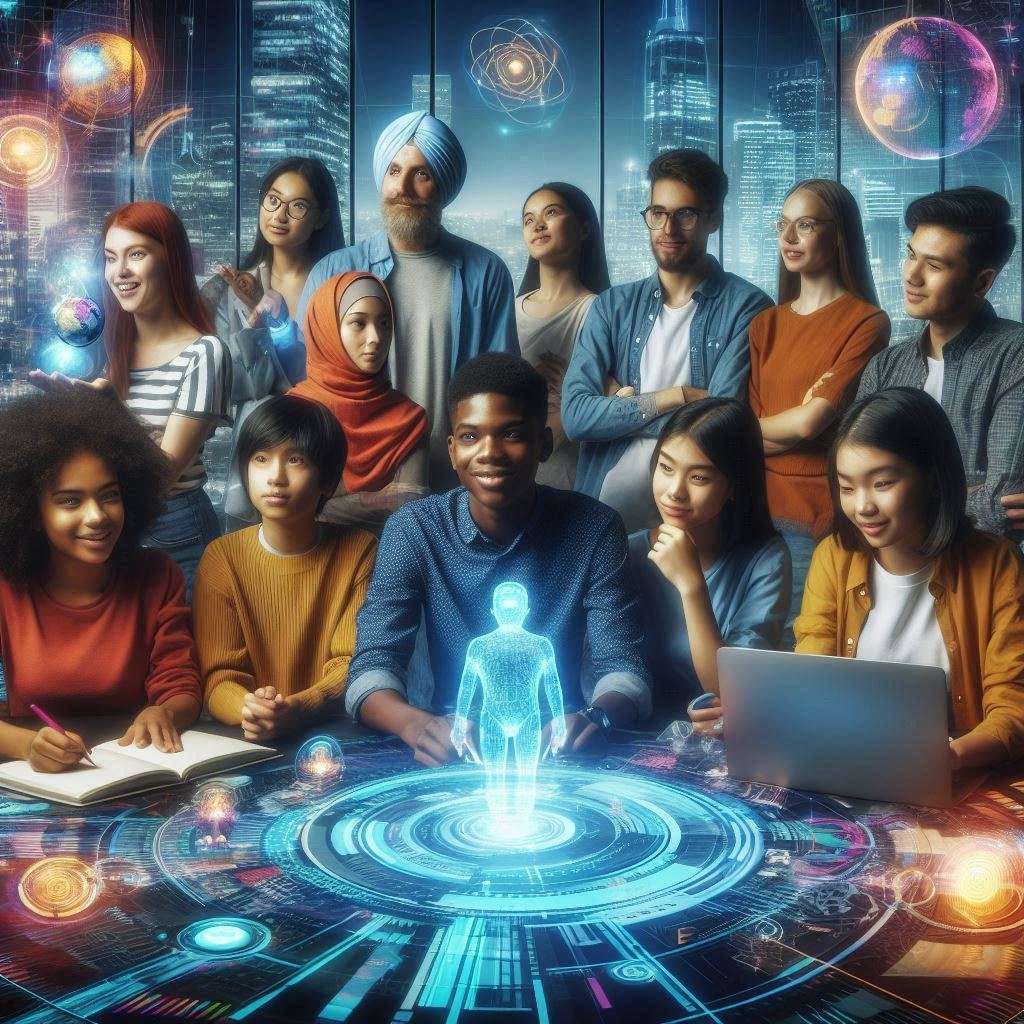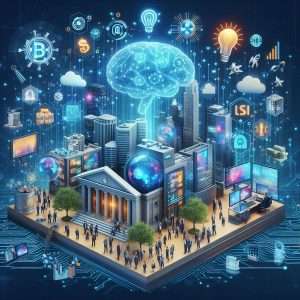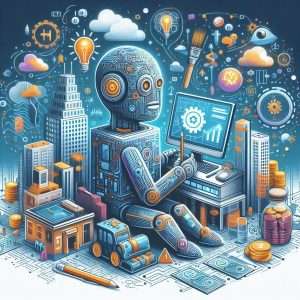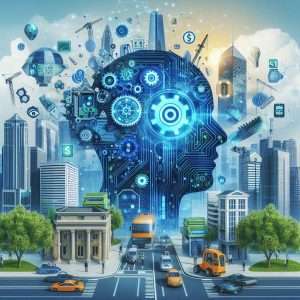
The AI Revolution, driven by Machine Learning, is transforming the world at an unprecedented pace, impacting various aspects of our lives, from healthcare to transportation. As we delve into the depths of this revolution, it becomes clear that Machine Learning is the cornerstone of this change, enabling computers to learn, adapt, and interact with humans in more sophisticated ways.
The AI Revolution is not just a technological advancement; it’s a societal shift. It’s changing the way we live, work, and interact with each other. With the rapid development of Machine Learning algorithms and the availability of vast amounts of data, AI systems are becoming increasingly intelligent, making decisions that were previously the exclusive domain of humans. This shift is creating new opportunities and challenges, and it’s essential to understand the implications of this revolution to navigate the future effectively.
The impact of the AI Revolution is being felt across various industries, from healthcare to finance, and from education to entertainment. In healthcare, AI-powered systems are being used to diagnose diseases more accurately and develop personalized treatment plans. In finance, AI algorithms are being used to detect fraud and optimize investment portfolios. The common thread among these applications is Machine Learning, which enables computers to learn from data and make informed decisions.
As we explore the various facets of the AI Revolution, it becomes clear that Machine Learning is the driving force behind this transformation. From natural language processing to computer vision, Machine Learning algorithms are being used to solve complex problems and create new opportunities. The applications of Machine Learning are vast and diverse, and it’s essential to understand the fundamentals of this technology to appreciate the significance of the AI Revolution.
Understanding Machine Learning: The Backbone of the AI Revolution

Machine Learning is a subset of artificial intelligence that enables computers to learn from data without being explicitly programmed. This technology has been around for decades, but recent advances in computing power, data storage, and algorithmic techniques have made it possible to apply Machine Learning to a wide range of problems. The core idea behind Machine Learning is to train algorithms on large datasets, allowing them to learn patterns and relationships that can be used to make predictions or decisions.
The process of Machine Learning involves several stages, including data collection, data preprocessing, model training, and model deployment. The quality of the data and the choice of algorithm are critical factors in determining the success of a Machine Learning project. With the increasing availability of data and advancements in algorithmic techniques, Machine Learning is becoming more accurate and efficient, driving the AI Revolution forward. From image recognition to natural language processing, Machine Learning is being used to solve complex problems and create new opportunities.
The applications of Machine Learning are vast and diverse, ranging from virtual assistants like Siri and Alexa to self-driving cars and personalized recommendation systems. Machine Learning algorithms are being used to analyze vast amounts of data, identify patterns, and make predictions that can inform business decisions or improve healthcare outcomes. The potential of Machine Learning is vast, and it’s essential to understand the fundamentals of this technology to appreciate the significance of the AI Revolution.
Supervised Learning: The Foundation of Machine Learning
Supervised Learning is a type of Machine Learning where the algorithm is trained on labeled data, allowing it to learn patterns and relationships between input and output variables. This type of learning is commonly used in applications such as image classification, sentiment analysis, and speech recognition. Supervised Learning algorithms are trained on large datasets, allowing them to learn from experience and improve their performance over time.
The key advantage of Supervised Learning is its ability to learn from labeled data, allowing it to make predictions or decisions with high accuracy. However, the quality of the data and the choice of algorithm are critical factors in determining the success of a Supervised Learning project. With the increasing availability of data and advancements in algorithmic techniques, Supervised Learning is becoming more accurate and efficient, driving the AI Revolution forward.
The Impact of the AI Revolution on Business and Society

The AI Revolution is having a profound impact on business and society, transforming the way we live, work, and interact with each other. From automation to augmentation, AI is changing the nature of work, creating new opportunities and challenges. The impact of AI on business is being felt across various industries, from customer service to supply chain management, and from marketing to finance.
The AI Revolution is also having a significant impact on society, from education to healthcare, and from transportation to entertainment. AI-powered systems are being used to improve healthcare outcomes, personalize education, and enhance transportation systems. The common thread among these applications is Machine Learning, which enables computers to learn from data and make informed decisions.
The impact of the AI Revolution on business and society is not limited to the economy; it’s also having a profound impact on our culture and values. As AI systems become more intelligent and autonomous, we need to reevaluate our values and principles, ensuring that the benefits of the AI Revolution are shared by all. This requires a multidisciplinary approach, involving technologists, policymakers, and philosophers, to ensure that the AI Revolution benefits humanity as a whole.
The Future of Work: Automation and Augmentation
The AI Revolution is transforming the nature of work, creating new opportunities and challenges. Automation is the process of using machines to perform tasks that were previously done by humans, while augmentation is the process of using machines to enhance human capabilities. The key advantage of automation is its ability to improve efficiency and productivity, while the key advantage of augmentation is its ability to enhance human creativity and innovation.
The future of work will require a combination of automation and augmentation, allowing humans and machines to work together more effectively. This requires a fundamental shift in the way we think about work, education, and training, ensuring that we have the skills and knowledge to thrive in an AI-driven world.
The Ethics of AI: Ensuring Accountability and Transparency

The AI Revolution raises significant ethical concerns, from accountability to transparency, and from bias to fairness. As AI systems become more intelligent and autonomous, we need to ensure that they are aligned with human values and principles. This requires a multidisciplinary approach, involving technologists, policymakers, and philosophers, to ensure that the AI Revolution benefits humanity as a whole.
The key challenge in ensuring the ethics of AI is the lack of transparency and accountability in AI decision-making processes. As AI systems become more complex, it’s essential to develop techniques that can explain and interpret their decisions, ensuring that they are fair, transparent, and accountable. This requires significant advances in areas such as explainable AI, fairness, and robustness, ensuring that AI systems are aligned with human values and principles.
The ethics of AI is not limited to the technology itself; it’s also about the data that drives it. As AI systems rely on vast amounts of data, we need to ensure that this data is accurate, reliable, and unbiased. This requires significant advances in areas such as data quality, data governance, and data privacy, ensuring that the data that drives AI systems is trustworthy and secure.
Ensuring Fairness and Transparency in AI Decision-Making
Ensuring fairness and transparency in AI decision-making is critical to building trust in AI systems. This requires significant advances in areas such as explainable AI, fairness, and robustness, ensuring that AI systems are aligned with human values and principles. The key challenge in ensuring fairness and transparency is the lack of understanding of AI decision-making processes, making it essential to develop techniques that can explain and interpret AI decisions.
The development of explainable AI is a critical step towards ensuring fairness and transparency in AI decision-making. Explainable AI involves developing techniques that can explain and interpret AI decisions, ensuring that they are fair, transparent, and accountable. This requires significant advances in areas such as model interpretability, model explainability, and model transparency, ensuring that AI systems are aligned with human values and principles.
The Future of AI: Emerging Trends and Opportunities
The future of AI is exciting and uncertain, with emerging trends and opportunities that have the potential to transform various aspects of our lives. From Edge AI to Quantum AI, the next generation of AI systems will be more intelligent, autonomous, and powerful, driving the AI Revolution forward.
The key advantage of Edge AI is its ability to process data in real-time, reducing latency and improving performance. Edge AI involves processing data at the edge of the network, closer to the source of the data, allowing for faster and more efficient processing. This has significant implications for applications such as autonomous vehicles, smart homes, and industrial automation.
The development of Quantum AI is another exciting trend in the AI landscape. Quantum AI involves using quantum computing to develop more powerful and efficient AI algorithms, allowing for breakthroughs in areas such as machine learning and optimization. The key advantage of Quantum AI is its ability to solve complex problems that are currently unsolvable with traditional computing, allowing for significant advances in areas such as medicine, finance, and climate modeling.
The Potential of Edge AI: Real-Time Processing and Decision-Making
The potential of Edge AI is vast, with applications in areas such as autonomous vehicles, smart homes, and industrial automation. Edge AI involves processing data in real-time, reducing latency and improving performance, allowing for faster and more efficient decision-making. The key advantage of Edge AI is its ability to process data closer to the source, allowing for more accurate and reliable decision-making.
The development of Edge AI requires significant advances in areas such as edge computing, IoT, and 5G networks, ensuring that data can be processed and transmitted in real-time. The potential of Edge AI is vast, with applications in areas such as predictive maintenance, quality control, and supply chain management, allowing for significant improvements in efficiency and productivity.
The Global Impact of the AI Revolution: Opportunities and Challenges
The AI Revolution is a global phenomenon, with opportunities and challenges that are being felt across the world. The key advantage of the AI Revolution is its ability to drive economic growth, improve healthcare


https://t.me/pt1win/415
Актуальные рейтинги лицензионных онлайн-казино по выплатам, бонусам, минимальным депозитам и крипте — без воды и купленной мишуры. Только площадки, которые проходят живой отбор по деньгам, условиям и опыту игроков.
Следить за обновлениями можно здесь: https://t.me/s/reitingcasino
https://t.me/iGaming_live/4582
https://t.me/s/iGaming_live/4770
https://t.me/s/reyting_topcazino/14
https://t.me/of_1xbet/819
https://t.me/s/ef_beef
https://t.me/officials_pokerdom/3806
https://t.me/s/Gizbo_officials
https://t.me/s/RejtingTopKazino